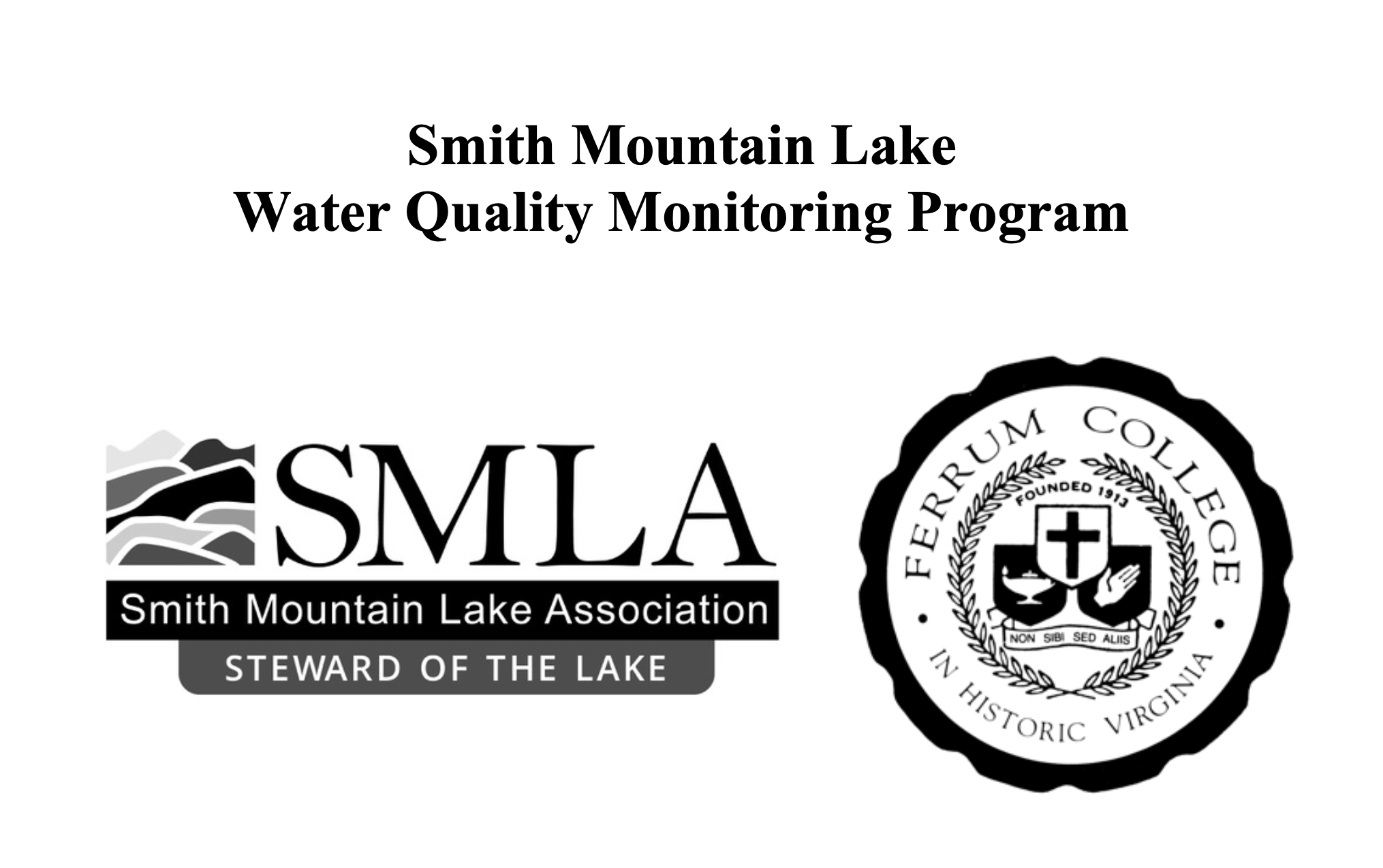
Water Quality Monitoring
The Smith Mountain Lake Association (SMLA) and Ferrum College have been monitoring the water quality of SML for over 37 years. Each summer, Ferrum College faculty and students, along with SMLA volunteers, monitor the lake water for nutrients, bacteria, and algal blooms. Stakeholders and local health departments use collected data to inform the community of any concerns. Join our upcoming webinar on March 26, 4:00-5:30, to learn about the results of the 2023 water quality monitoring program.
* Current Readings means the lakewide averages for the period from 8/13/2022 to 8/5/2023
What do Trophic Status, 20-Year Average, or Prior Year mean?
There are three benchmarks against which we compare the results of our water quality monitoring. These benchmarks provide us with some context to which we can compare the current measurements of Secchi Depth, Chlorophyll-a concentration, or Phosphorous concentration. When we select Trophic Status as our benchmark, we are comparing our current measurements against a scale that represents the range of what is generally considered to indicate the overall age and health of a lake. When we use 20-Year Average as our benchmark, we are comparing our current measurements against the average over the past 20 years to determine if the long-term trend is improving or deteriorating. When we choose Prior Year as our benchmark, we are comparing our current measurements against those that were done in the prior year to see if the short-term trend is improving or deteriorating.
What do the colors mean?
Depending on the benchmark you have selected (e.g. Trophic Status, 20-Year Average, or Prior Year), the colors represent the range of values that would generally be considered favorable (green) or unfavorable (red) compared to the specifc benchmark. The orange needle points to the actual values that have been measured on the lake during the period indicated. When the orange needle is pointing to the green zone on the gauge, we consider that to be a favorable result relative to the benchmark. When the orange needle is pointing to the red zone of the gauge, we consider that to be unfavorable relative to the benchmark.
What does Water Clarity mean?
Water Claity is an indication of how clear the water is. Measured in meters (m), the higher the number the better. It is important because it tells us the extent to which the water may be getting clouded by sediment stirred up by boating activities or runoff from the surrounding shoreline caused by rain. It also may be affected by the amount of algae gowing in the water, which would be a sign of excessive nutrient pollution washing into the lake from the surrounding watershed. We measure water clarity by lowering a Secchi disk into the water and noting the depth at which we can no longer see the black and white markings on the disk. A value of 2.0 means that we can see the Secchi disk up to 2 meters below the surface but no further.
Why is Chlorophyll-a important?
Chlorophyll-a is a specific form of chlorophyll that is used in photosynthesis. It Its presence in the water is an indication of the presence of algae. Measured in parts per billion (ppb), the higher the concentration of chlorophyll-a we see, the more algae are present. While algae are an important part of the food chain and a certain amount is considered to be a sign of a healthy lake, in excess amounts it can cloud the water and actually deplete the oxygen in the water as dying algae decompose. Certain species can produce toxins that are harmful to humans, pets, and native animals. These are usually referred to as blue-green algae, or cyanobacteria, although strictly speaking these are not considered to be included in the scientific definition of algae.
Why is Phosphorous important?
Phosphorous is an essential nutrient for all living things, including plants, animals, and algae. It is considered a limiting nutrient in fresh water systems, meaning that the rate of growth of aquatic plants and algae is limited by the amount of phosphorous available in the water. Measured in parts per billion (ppb), higher concentrations of phosphorous in the water can stimulate excessive growth of algae and can contribute to harmful algal blooms. While it is one of the most common naturally occurring elements on the planet, it can reach undesireable levels if it flows into the lake from the use of lawn fertilizer and agricultural activity.
SMLA monitors our lake for key parameters indicative of the water quality of the lake. The result of this monitoring provides us with a long term view of the natural aging of the lake, helps identify specific problem areas that can be addressed to improve water quality, and enables SMLA to alert the public to any instances of elevated harmful algae or bacteria concentrations. SMLA stewardship efforts have helped maintain the favorable trophic status of the lake over the past 20 years based on key metrics.
The summer marks our 36th year of monitoring the quality of the water in SML and the rivers and streams that feed the lake. We have approximately 55 citizen volunteers who monitor 84 sites around the lake during the summer. Every two weeks during the summer these volunteers donate an hour of their time to collect water samples and water clarity readings from their own boat. The samples are analyzed by scientists at nearby Ferrum College, and the results are combined with the water clarity readings to calculate an overall Trophic State Index, a measure of water quality. The resulting data are reported back to the volunteer monitors, SMLA members, the public, the Virginia Department of Environmental Quality, and the Virginia Department of Health. If there is an issue with the quality of the water SMLA promptly alerts these same constituents.
To learn more or to become a Water Quality Monitor, contact Tom Hardy, Director of SMLA Water Quality Monitoring at theoffice@smlassociation.org or call the SMLA office at (540) 719-0690. It is easy, fun and rewarding to know that as a monitor you are promoting good stewardship of this beautiful lake. All you need to bring is your boat, a cooler for storing water samples, and a life jacket. Monitoring equipment and training will be provided; no prior experience is required. There is an annual kickoff meeting for volunteer monitors every May to review results of prior year monitoring and to hear plans for the upcoming season; please call or e-mail for details.
Join SMLA Today
Click to learn more about how you can help Smith Mountain Lake and its community.



